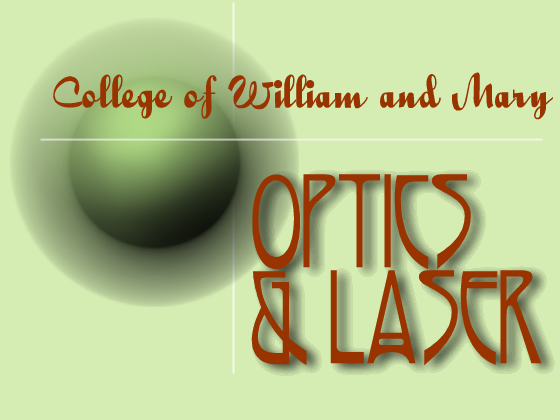
| |
| Home |
| Contact |
| Directions |
| Research |
| People |
| Publications |
| Photos |
| myWM |
Magneto-Electric Effect |
In this project, the spin state at the PbZr0.52Ti0.48O3/La0.67Sr0.33MnO3 (PZT/LSMO) interface is directly probed by the interface-specific Magnetization-induced Second-Harmonic Generation (MSHG) technique, and the control of exchange coupling between interfacial spins is realized through their coupling with the charge degree of freedom, which provides previously unknown critical insight into the magnetic order at this emerging multiferroic heterointerface.
 |
|---|
Figures 1(a) and 1(b) display the interfacial and bulk magnetization as a function of applied gate voltage Ug probed with MSHG and MOKE at 78K, respectively. The key finding is that the magnetization of the interfacial layer is modulated by Ug, while the bulk magnetization is not. The magnetic contrast for MSHG is shown in Figure 1(c), where I(±M) is the signal intensity received by the detector when the macroscopic magnetization M is aligned with external magnetic field in either positive or negative [100] direction. The magnetic contrast A obtained by both MSHG and MOKE is linear with M in the probed volume, if magnetic component is much smaller than non-magnetic component in signal intensity as in our case. The magnetic contrast A of MSHG measurement as a function of Ug is displayed in Fig. 1(d), where positive Ug refers to positive voltage applied to the indium tin oxide top electrode. These results indicate that the modulation of gate voltage on PZT/LSMO heterostructure, which is not strong enough to change the magnetization of the bulk LSMO layer, can significantly tune the magnetic state at the interface. This may provide a clue for fabricating low energy consumption multifunctional devices based on similar material systems.
 |
|---|
To elucidate the change of interface magnetization with gate voltage, ferroelectric (FE) polarization (P) measurements are carried out, as shown in Fig. 2(a). The FE polarization saturates with gate voltage above 10 V (electric field of approximately 180kV/cm) or below -10V, indicating that all FE domains are aligned. The switching transition around Ug = ± 2V is not sharp, resulting from the variance in switching threshold of different FE domains. From the FE polarization measurement, we derive the change in magnetic contrast A as a function of P, as shown in Fig. 2(b), using the dependence of A on gate voltage Ug (Fig. 1(d)). The relationship between A and P exhibits a linear correlation, independently of the history of polarizing PZT layer, as the data with decreasing gate voltage (black) overlaps with the increasing one (red). The magnetic contrast A as a function of strain S is depicted in Fig. 2(c), which is derived from the relationship between strain and gate voltage in PZT thin films studied and using the dependence of A on gate voltage Ug (Fig. 1(d)). There is no clear correlation between interface magnetization and strain. Thus, the observed change of interface magnetization with gate voltage results from charge injection, the degree of which is estimated to be ± 0.231 electrons per Mn ion in the first unit cell layer at the interface.
Our results show that the magnetization in the first unit cell layer at the interface can be widely tuned over an order of magnitude by varying the applied electric field between ± 180kV/cm. The cross-coupling between ferroelectric and ferromagnetic behavior at the heterointerface is mainly electronic, due to charge injection. The ferroelectric polarization of PZT can tune the spin alignment of Mn ions at the heterointerface from FM to AFM exchange coupled. In contrast, the bulk magnetization probed with MOKE remains unchanged. Multiple domains of FM and AFM phase coexist as the ferroelectric polarization of PZT is switched. We believe our results provide deeper insights into the interfacial spin-charge coupling.
References:
- X. Ma, A. Kumar, S. Dussan, H. Zhai, F. Fang, H. B. Zhao, J. F. Scott, R. S. Katiyar, and G. Lüpke, Charge Control of Antiferromagnetism at PbZr0.52Ti0.48O3/La0.67Sr0.33MnO3 Interface, Appl. Phys. Lett. 104, (2014) 132905.
Funding: DOE
|